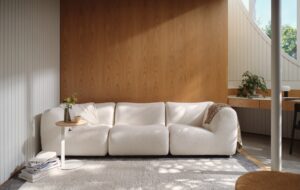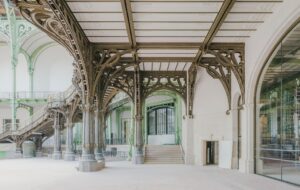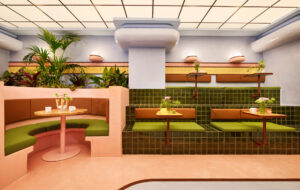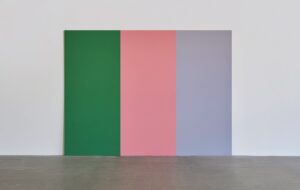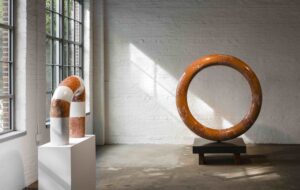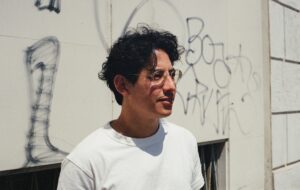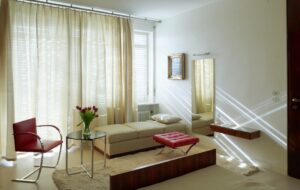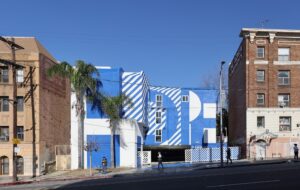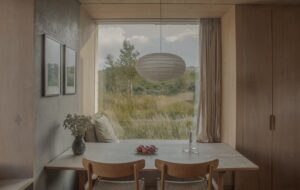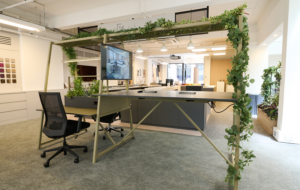
words Anna Bates
portraits Mustafa Nurdogdu
“You remember when you stayed at home with your family and talked about food – normal life things?” ponders Seyhan Özdemir, who co-founded Turkish design practice Autoban with Sefer Çaglar in 2003. “Everything was so basic – the world is not like that here. In Istanbul everything is confused and complex.” Özdemir and Çaglar have been busy with their Viking-style invasion of Istanbul’s interiors. So far, the duo has designed over 50 interiors and developed an internationally acclaimed line of furniture as a by-product.
We meet by Autoban’s studio in Galata – a beautiful, marble-floored townhouse in the historic quarter of the city. There is a faint smell of damp, and despite the 20 staff, an overwhelming sense of stillness – a huge contrast to the bustle of the city’s streets.
The space has something of the faded grandeur of an old hotel. Stickers of the company graphics brand the doors; there’s one of a woman hoovering and another of a moustached man eyeing up a duck with an axe. Autoban wants to make you nostalgic, taking you back to a life more simple. It’s a message that could be appreciated by inhabitants of any city, which is very important to Özdemir and Çaglar. They say they don’t want to be seen as a “Turkish” design practice. When I ask them why, I get the rant they’ve given to many journalists: “We are designers. We were born here, we’ve grown up here. But I think a designer has no country – no identity.”
Özdemir and Çaglar met at Mimar Sinan Fine Arts University, where Özdemir studied architecture and Çaglar studied interior design. They graduated in 1998 – and put aside their romantic history to set up business in 2003. Autoban’s first projects were interiors born mostly out of frustration. “In Istanbul there are no good buildings to make good interior design in,” says Özdemir. “There are many buildings from around the Ottoman time, a few buildings from the 60s, but most of them got knocked down by the government – they destroyed the city’s memories.” So instead, Autoban “created architectural patterns in the projects – using furniture,” she says.
Despite Autoban’s heavy focus on pattern, they describe themselves as “modernist people”, citing Charles and Ray Eames as their greatest influence. “In all our products there is a strong modernist shape and line,” says Özdemir. “We respect the modernist philosophy, but we put our attitude, our style on it.” They aren’t interested in exploring the technical potential of materials as the modernists did; they are interested in modernism as a purely aesthetic and nostalgic practice. Woody – a leather upholstered chair with a design composed of structural wooden lines – is a good example of this influence, but the final piece is a crafted object made by local producers with meticulous attention to detail – there is no mass production here.
There is also something faintly exotic about Autoban’s furniture, but it lies in such fine details it’s hard to pin down. Sledge chair, a low lounge chair, has two semi-circles carved out of its sides. The shape could echo the silhouetted mosque domes of the city – but it also has the bold, playful shapes you could find in a children’s playground. Their Starfish table, with legs positioned in a geometric star shape, could be referencing geometric Islamic art, or the base of the Eames’ Lounge chair. It could be that Autoban wants to confuse us a bit. Or it could be that working in Istanbul – with one foot in Europe and one foot in Asia, and the accompanying identity crisis – means that the scope for inspiration is just much more diverse than their European counterparts.
What is certain is that ignoring your environment isn’t that easy. Pumpkin – a round side table made of strips of stainless steel – was described by many as resembling a traditional Ottoman hat, and Özdemir agrees. “We didn’t think we’d been inspired by something Turkish,” she says. “I don’t want to use only Turkish patterns, but sometimes it just happens. These things come into your head.”
I’m here for Istanbul’s annual design week, where Autoban’s work is present only in the form of imitations. Like Autoban, some of the younger designers reference traditional silhouettes, but unlike the practice they try too hard to reflect Istanbul, turning out cliches. Much of the fair was a curious blend of ceramic sanitary ware (Turkey produces 80 per cent of Europe’s bathtubs, sinks and toilets), and re-appropriated furniture. Although Özdemir says the smaller manufacturers are beginning to realise the importance of designers, the country’s wealth of manufacturers isn’t interested in home talent. Young designers have to use the city’s heritage of craftsmen and artisans to get pieces made, and junk or found objects as raw material.
Autoban has similarly learnt to treat the street as an ideas and resource bank. One of their products, Spider, is a light with a bulb for the body and 25 legs sticking out of it. “I saw this piece of metal being carried by a garbage collector,” says Özdemir. “It had thin metal legs – it looked like a spider. I bought if from him for 50p, then when I got back, I put a bulb in it.” The piece is produced by a craftsman down the road from the studio and has a distinctly homemade feel to it.
Ironically, the lack of manufacturing support for Turkish designers has been Autoban’s greatest advantage. If one of the country’s manufacturers had been interested in working with the duo, it is unlikely that their distinctive detailing would have survived intact, and that their body of work would have the same character and coherence. With affordable craftsmen on their doorstep, Autoban has enjoyed the luxury of quality and control other European designers dream of. Working with local wood, metal, glass and plastic specialists, they have been able to develop their ideas at the craftsmen’s workshops and oversee every detail.
A call for prayer interrupts us, but Özdemir continues talking. She looks very chic in a highly graphic top, skinny jeans and patent shoes – later for the shoot she poses seductively for the camera, while Çaglar (who doesn’t speak English) prefers to clown about. The duo enjoys something of a celebrity status in Istanbul and they take pride in this position. I later take a tour of House Café Tünel, one of the acclaimed chain of restaurants they have designed, where even the toilet doors are stamped with the practice’s graphics – and sitting in the corner are the designers themselves, eating a sandwich.
Özdemir says that “interiors are like a movie for us”. They treat each room of the House Café chain like a film still. “It’s like the world of a rich Istanbul family,” she says. “When people go to the cafe, they feel they are in their house – they see furniture from the 40s and 50s that they have inherited. We design our products for this story.” House Café Istinye, located in a shopping mall and the first of the chain that isn’t in the city centre, incorporates architectural monuments from central Istanbul, such as elements from the clock tower and train station recreated in metal.
But it was partly arrogance that made Autoban design its own furniture for its interiors. With the exception of a Castiglioni lamp and some Eames products, Özdemir says they couldn’t find the “really good design pieces” they needed for their interiors, so they decided to make their own. Much of the furniture originates from Autoban’s “imaginary scenes”, and the pieces have a prop-like quality to them. There’s One Armed – a piece that resembles a school chair but with just one arm protruding. It has a cheeky, unexpected quality. Then there is the wooden Sleigh low chair – another re-interpretation of a childhood classic.
This playfulness makes the furniture instantly accessible, which is particularly important given that Autoban has to design furniture that people want to pay to sit at, over and over again. This accessibility got the practice noticed by Spanish-Portuguese furniture manufacturer De La Espada, which has put all 27 of Autoban’s furniture pieces into production. Launched in a vast showroom in Milan, theAutoban by De La Espada” brand will make the furniture readily available to the rest of the world.
Özdemir has to get back to work – the duo is busy finishing a cinema that is running behind schedule. She says they enjoy the challenge, but the collaboration with De La Espada has marked a shift in priority for them – they want to start working solely on their products. But the practice is determined not to lose its design ethos and become seduced by the gallery market. “Design means products,” Özdemir says. “We don’t want to say, ‘This product is really important.’ We want it to be normal. We want it to be like real life.”
top image Sefer Çaglar (left) and Seyhan Özdemir outside their Istanbul studio
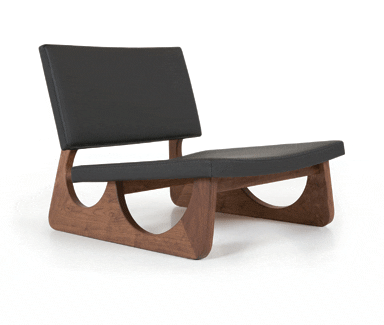
Sledge lounge chair, 2003 (redesigned 2007) © Leonor Gusmao
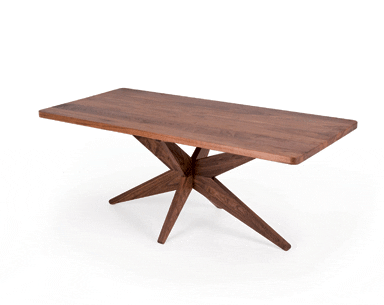
Starfish table, 2003, which can be used as a dining table or a desk © Leonor Gusmao
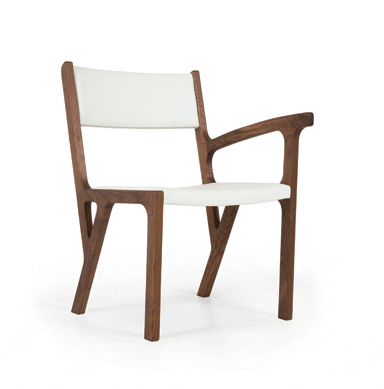
One-Armed chair, 2005, which forms a bench when two chairs with opposing arms are put together © Leonor Gusmao
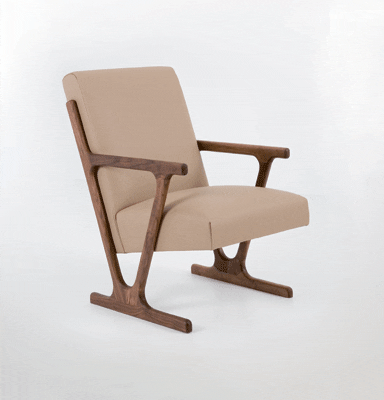
Woody chair, 2007, an oak or walnut lounge chair inspired by modernist furniture © Leonor Gusmao
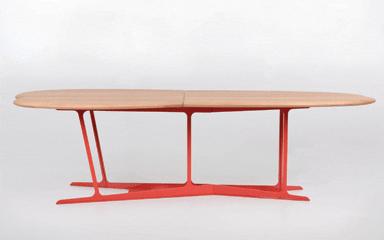
Pebble table#, 2007, with a plate iron base and walnut or oak surface © Leonor Gusmao
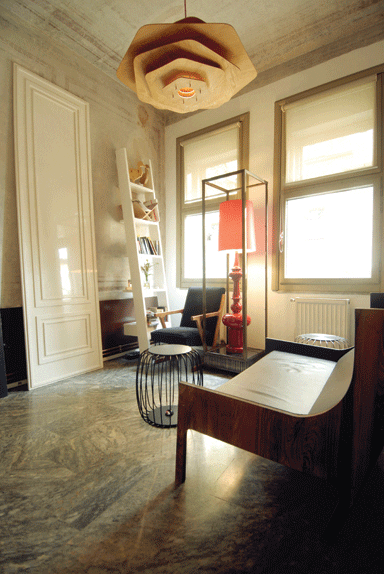
Autoban’s studio; Magnolia light, 2005; King, 2006, a floor lamp taking its shape from a chess piece; Bergère Sofa, 2005, inspired by Özdemir’s grandmother’s armchair; Pumpkin, 2004, a brass coffee table or stool; Ladder Bookcase, 2006

Autoban’s studio. On the wall is Spider, 2003, a light that casts spindly shadows
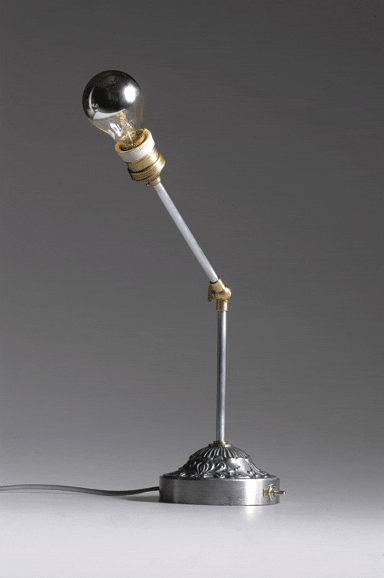
Lamba, 2003, designed using local production techniques and materials © Ali Bekman
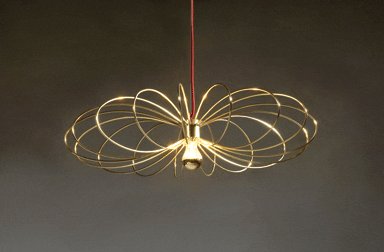
Flying Spider light, 2006 © Ali Bekman
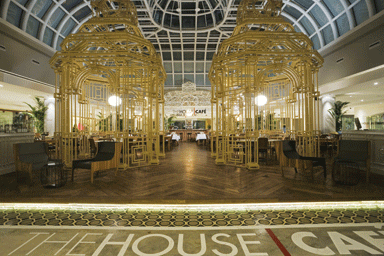
The House Cafe Istinye, featuring elements of the city’s clock tower and station recreated in metal © Ali Bekman

